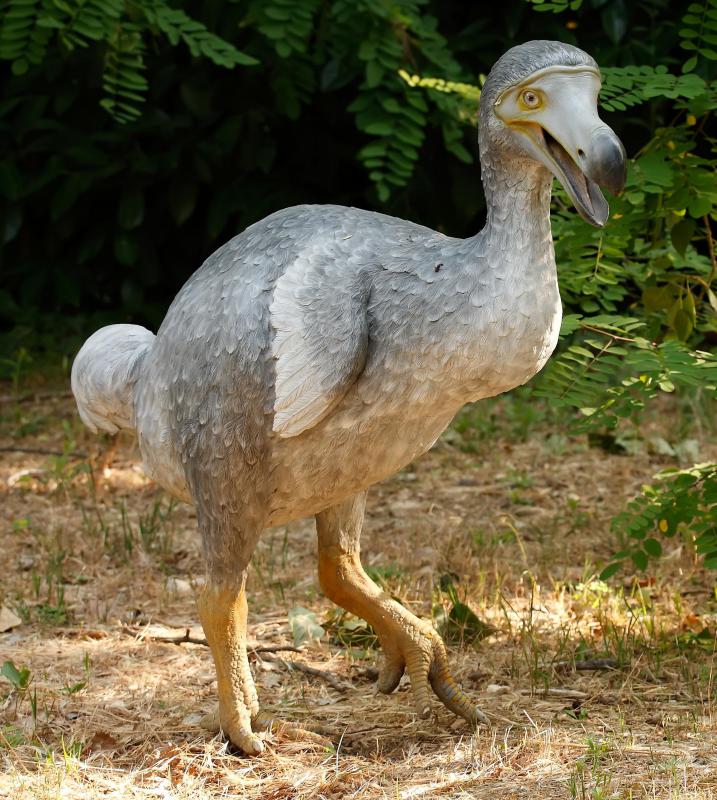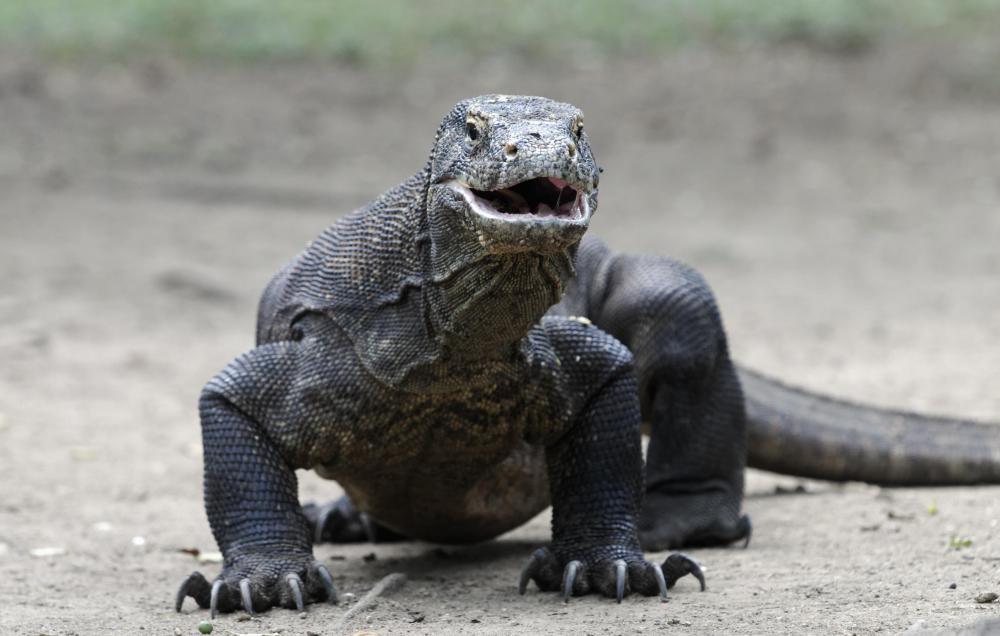At InfoBloom, we're committed to delivering accurate, trustworthy information. Our expert-authored content is rigorously fact-checked and sourced from credible authorities. Discover how we uphold the highest standards in providing you with reliable knowledge.
What is Island Gigantism?
Island gigantism is a biological phenomenon where animals that live on isolated islands tend to grow larger because of a lack of predators and competition which would otherwise be present on the mainland. Rather than being caused by a novel selection pressure, as is thought to be the case with the complementary phenomenon of island dwarfism, island gigantism is caused by the removal of constraints. The result are organisms that swell to ponderous sizes. Island gigantism is an apparent counterexample to Bergmann's rule, a generality that states that animals that live near the equator tend to be smaller. Some islands with species that display island gigantism are located near the equator, but still have unusually large animals.
There are numerous interesting examples of island gigantism, mostly occurring among animals that are relatively small to begin with. There are the famous Giant Tortoises, found on the Seychelles and Galápagos Islands. These icons of unusual island fauna are members of one of the oldest surviving reptile orders. One individual, Harriet the Turtle, which was once a pet of Charles Darwin's, is the longest-lived vertebrate known, being born in 1830 and only dying in 2005, 175 years later. Scientists have analyzed the internal organs of these tortoises and found that they look the same whether the animal is old or young, causing speculation as to whether these tortoises display senescence (increase in mortality with age) in the way that most other animals do.

Another, less friendly gigantic island reptile is the 2–3 m (6.5–10 ft) Komodo dragon of Indonesia, only found on the islands of Komodo, Rinca, Flores, Gili Motang, and Gili Dasami. The Komodo dragon is an ambush predator and scavenger that can kill numerous small animals within its range, making it the dominant predator on the islands where it lives. A reptile taking the place of apex predator is an ecological oddity, as mammalian predators began to routinely occupy this position long ago, after the extinction of the dinosaurs. The Komodo dragon is a reminder of a bygone evolutionary era. A rare example of island gigantism in a carnivore, the Komodo dragon is by far by the largest living species of lizard.

Island gigantism is rarer among mammals, but one example is the Flores Giant Rat, found on the island of Flores in Indonesia, measuring 41–45 cm (1.3-1.5 ft) with a tail length is 33–70 cm, at least twice the size of the more familiar Brown Rat. Numerous other gigantic mammals, mostly rodents, existed at one point but are now extinct. These include the giant hutia, a rodent from the West Indies that was the size of an American Black Bear, the Majorcan and Minorcan Giant Dormouse, giant lemurs from Madagascar, and giant rabbits and shrews from various isolated Mediterranean islands.

Other examples of island gigantism can be found among insects. The Madagascar hissing cockroach, found on Madagascar off the southeast coast of Africa, is the largest living cockroach, and the only known insect capable of hissing by forcing air through its spiracles (breathing holes) rather than rubbing appendages together. Remarkably, Madagascar hissing cockroaches are kept as beloved pets worldwide, and can live as long as five years. The giant weta of New Zealand, whose genus name, Deinacrida, is Greek for "terrible grasshopper," is among the heaviest insects on Earth, weighing more than a sparrow. Although the weta is a familiar site to locals of New Zealand, its mere appearance is enough to make a visitor shriek in shock.

The Lord Howe Island stick insect is another interesting example of island gigantism. This half-foot-long stick insect, called a "walking sausage" due to its appearance, was thought to have been extinct in the 1930s, only to be rediscovered at Ball’s Pyramid, the world's tallest and most isolated sea stack between New Zealand and Australia. A population of 20-30 individuals was found under a single Melaleuca shrub. Some of the population was taken into captivity and bred, now numbering 50 individuals and thousands of eggs. The researchers hope to reintroduce the insects to nearby Howe Island after a campaign to eliminate invasive rats on the island is completed.

Many of the beneficiaries of island gigantism are birds, the vast majority of which are extinct due to humans and species we have introduced, especially black rats. The most famous is probably the dodo, which lived on the Indian Ocean island of Mauritius until it went extinct sometime between 1650 and 1700. The dodo is sometimes thought of as a giant pigeon or dove, as it is closely related to both species. It didn't have a chance at surviving humans and the new predators which were introduced to Mauritius. Over the last few hundreds years, many thousands of island bird species have gone extinct in a similar fashion, often when rats raid their nests and eat the eggs faster than they can hatch.

Some of the largest birds of recent times were island giants, most notably the moa and Haast's eagle of New Zealand and the elephant bird of Madagascar. The moa and elephant bird both of which exceeded three meters (10 ft) in height, while Haast's eagle had a wingspan of 2.6 to 3 m (8 to 10 ft). The elephant bird's weight is thought to have approached half a ton (1,000 lbs). Both of these fantastic creatures went extinct around the 16th century and possibly a few hundred years earlier, probably wiped out by Western colonists and the species they introduced. The moa and elephant bird were both ratites, flightless birds which include surviving species such as the cassowary, ostrich, rhea, emu and kiwi, all except the last being quite large by bird standards. Haast's eagle is probably the largest eagle that has ever lived, and would have been capable of killing humans with a single attack. While it probably preyed mostly on the moa, Haast's eagle went extinct recently enough that it may have had encounters with humans, and may have indeed been exterminated by us, as we would probably have considered it a threat. The Haast eagle's display of island gigantism is another rare example of insular predator gigantism.
AS FEATURED ON:
AS FEATURED ON:

















Discuss this Article
Post your comments